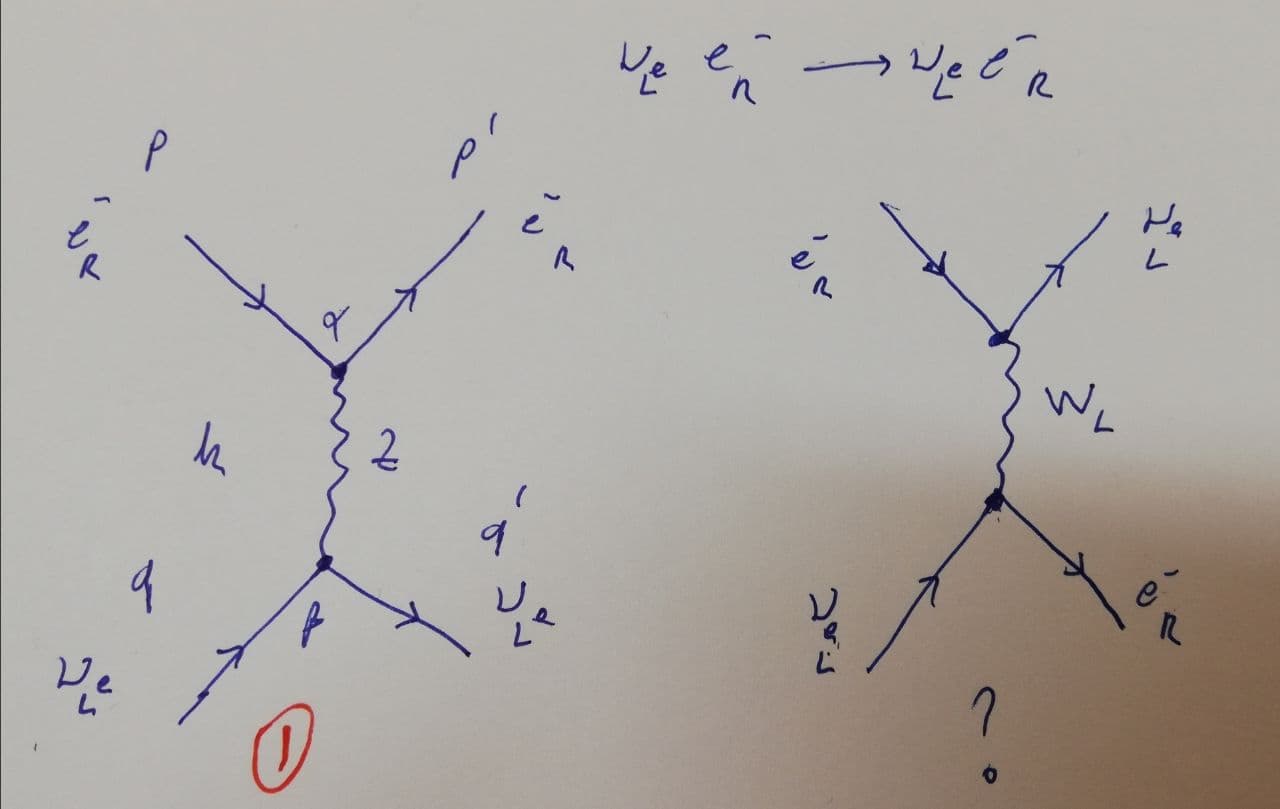 This is a question about the Feynman diagrams: imagine I want to calculate the following process:
This is a question about the Feynman diagrams: imagine I want to calculate the following process:
$$\nu_{e, L} + e^-_R \rightarrow \nu_{e, L} + e^-_R$$
I can have a t-channel diagram with $e^-_R e^-_R$ and $\nu_{e, L} \nu_{e, L}$ currents with an intermediate Z boson.
However I seem to have a process with $e^-_R \nu_{e, L}$ and $\nu_{e, L} e^-_R $ current terms with an intermediate W boson.
I am just not sure about the second diagram described above because it seems like handedness through the current terms in the diagram is not conserved.
My question simply is that does the handedness have to be conserved in the current terms of Feynman diagrams? Can the second process exist?
Edit To clarify what I am asking, a diagram has been added.
